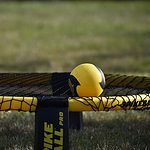When it comes to throwing a bocce ball, mastering the basics is key. From selecting the right ball size to refining your grip and stance, each step plays a crucial role in your success on the court.
But what about the nuances of adjusting your technique to different playing surfaces or developing strategic gameplay? Let's explore the intricacies of bocce ball throwing that can elevate your skills and give you a competitive edge.
Key Takeaways
- Master grip, stance, and swing techniques for control and accuracy.
- Focus on smooth release, follow-through, and pointing for precise throws.
- Utilize advanced strategies like spocking, banking, and blocking for competitive advantage.
- Adapt techniques based on opponents' strategies to excel in competitive bocce matches.
Selecting the Right Bocce Ball
When choosing the perfect bocce ball set for your game, consider the skill level and gameplay preferences to ensure an optimal playing experience. Start by looking for a bocce ball set with regulation-sized balls, typically measuring 107 mm in diameter and weighing 920 g. These specifications are crucial for standard gameplay and maintaining fairness among players. Additionally, think about the skill level of the players involved. Beginners may prefer smaller balls that are easier to handle, while advanced players might enjoy the challenge of larger balls that require more precision.
A quality bocce ball set should include 8 colored balls, allowing for team play or solo play variations. The set should also come with a smaller ball called the pallino, which serves as the target for the game. This variety in colored balls and the pallino adds layers of strategy and excitement to your bocce matches. Remember, the bocce ball set you choose can greatly impact the overall enjoyment and competitiveness of your gameplay sessions.
Understanding the Bocce Court
The bocce court serves as the designated arena where players aim to strategically roll or throw their bocce balls towards the pallino to secure points in the game. A regulation court is typically 13 feet wide and 90 feet long, divided by a center line into two equal halves for each team. The playing surface should be smooth and flat to ensure consistent gameplay.
At the center of the court lies the pallino, around 5 meters away from the foul line, which marks the throwing point for players. To measure distances accurately, a measuring tape or a regulator peg is often used. Players must stay behind the foul line when throwing their bocce balls towards the pallino.
Understanding the layout of the court is crucial for strategic gameplay, as it dictates how players position themselves and aim their shots effectively. Familiarizing yourself with the bocce court's dimensions and key elements will enhance your overall bocce ball experience.
Proper Grip and Stance
Having mastered the layout of the bocce court, let's now focus on achieving the perfect grip and stance for optimal performance in your throws. When it comes to holding the bocce ball, use a soft yet firm grip with your thumb and forefinger. This grip ensures you maintain control over the ball during the throw, allowing for greater accuracy. Additionally, your stance plays a crucial role in your performance. Ensure you adopt a comfortable stance with firm weight distribution, whether standing or crouching. This will enhance your stability and accuracy when releasing the ball.
To help you visualize the proper grip and stance, refer to the table below:
| Grip | Stance |
|---|---|
| Soft but firm | Comfortable with firm weight distribution |
| Thumb and forefinger | Stable and balanced |
| Consistent for muscle memory | Enhances stability and accuracy |
| Control during release | Minimizes erratic movement |
| Allows for a smooth roll | Develops a controlled release |
Practice holding the bocce ball in a way that feels natural to you, ensuring a smooth and controlled roll towards your target. Consistency in your grip and stance will lead to improved control and accuracy in your throws.
The Backswing Technique
To execute the backswing technique effectively in bocce ball, ensure your arm is positioned parallel to the ground for consistent results and enhanced power generation. The backswing involves bringing the ball behind your body, generating momentum and power for a longer throw.
By keeping your arm parallel to the ground during the backswing, you maintain consistency in your throws. Controlling the speed and angle of your backswing allows you to adjust the distance of your throw with precision. This technique is crucial for accuracy and distance control in bocce ball.
Practice the backswing motion to improve your skills and fine-tune your throw. Remember, mastering the backswing technique won't only enhance the power of your throw but also give you better control over the direction and distance of the ball. So, keep practicing and perfecting your backswing for successful throws in bocce ball.
Release and Follow-Through
Are you wondering how to ensure a smooth and controlled release of your bocce ball for maximum accuracy and distance? Mastering the release and follow-through is crucial to achieving the perfect throw. Here's how you can do it:
- Smooth Release: As you reach the peak of your swing, smoothly release the bocce ball from your hand. Ensure a controlled roll off your fingers to maintain accuracy and prevent unwanted spin.
- Optimal Trajectory: Aim to release the bocce ball at the peak of your swing to achieve the best trajectory and distance. This timing will help the ball travel in a straight line towards your target.
- Follow-Through: After releasing the bocce ball, extend your arm forward in the direction of your target. This follow-through motion ensures a straight and consistent roll, enhancing the accuracy of your throw.
Adjusting for Distance and Precision
Adjusting your grip and stance based on the desired distance and precision of your throw plays a critical role in perfecting your bocce ball game. For longer throws requiring more power and distance, consider widening your stance and gripping the ball more firmly. Engage in a longer backswing to generate the necessary power, releasing the ball at a slightly higher angle to achieve greater distance.
In contrast, when aiming for precision in shorter throws, opt for a shorter backswing and a gentler grip. Focus on the angle of release to control the ball's trajectory, aiming for a more direct path to your target.
To hone your skills, practice consistently to develop muscle memory for adjusting both the strength and precision of your throws. Experiment with different grips and stances to find what works best for you in varying situations. By mastering the art of adjusting for distance and precision, you'll enhance your overall bocce ball performance and increase your chances of outplaying your opponents.
Handling Different Playing Surfaces
Adapting your grip and throwing technique based on the playing surface's hardness and texture is essential for effectively controlling the movement of the bocce ball. When facing different playing surfaces, consider the following:
- Adjust Your Grip: Use a softer grip on grass or sand to prevent excessive rolling and a firmer grip on harder surfaces like concrete for better control.
- Factor in Moisture: Be mindful of how moisture affects surfaces; wet conditions can increase ball slippage and change rolling distances, so adjust your technique accordingly.
- Experiment with Release Angle: Vary your release angle and force to compensate for surface variations. This practice ensures consistent ball placement, regardless of the playing field.
To master the art of bocce ball, practice on various surfaces to develop adaptability and enhance your skills in different environments. By honing your throwing technique to suit different surface conditions, you'll be better equipped to control the ball's movement and optimize your rolling distances.
Strategies for Competitive Play
To excel in competitive bocce play, master the art of utilizing strategic techniques to outmaneuver your opponents and secure victory on the court.
Start by honing your pointing technique, rolling the bocce ball gently with a straight arm like a pendulum for precise and accurate shots.
Employ spocking strategically by hitting other balls to reposition them and gain a competitive advantage.
Utilize banking techniques to bounce the ball off rails and change angles, especially when the pallino is near the edges.
Additionally, employ strategic blocking by placing balls in your opponents' path to hinder their scoring opportunities and maintain control of the game.
While the volo technique, a high-arcing throw with backspin, isn't allowed in traditional court bocce due to safety reasons, mastering these techniques will give you the edge needed to dominate in competitive play.
Stay focused, adapt to the game's dynamics, and aim for consistent, strategic plays to come out on top.
Practicing Solo and With Partners
When practicing bocce ball, whether solo or with partners, focusing on specific skills can greatly enhance your gameplay and overall performance. Here are some tips to make your practice sessions more effective:
- Solo Practice
- Develop consistent throwing techniques by practicing your throw repeatedly.
- Aim for the pallino to improve accuracy and precision in your shots.
- Work on distance control by adjusting your throw strength to land the ball where you intend.
- Partner Practice
- Focus on communication with your partner to coordinate throws and strategize effectively.
- Practice setting up game-like scenarios to enhance teamwork and positioning skills.
- Work on strategies that involve both offensive and defensive play to outsmart your opponents.
Both solo and partner practice play crucial roles in mastering the art of bocce ball throwing. By dedicating time to these practice sessions, you can refine your skills, improve coordination, and elevate your overall game performance.
Troubleshooting Common Throwing Mistakes
To troubleshoot common throwing mistakes in bocce ball, analyze your grip, stance, and throwing techniques for improved accuracy and control.
Start by adjusting your grip and finger placement on the ball to ensure a consistent release and smooth roll. Experiment with different stances and body positions to find what works best for you in terms of accuracy and power.
Practice various throwing techniques such as the underhand, sidearm, or top spin to determine which gives you the most control and precision. Focus on your follow-through after releasing the ball to maintain momentum and direction towards your target.
Pay close attention to the trajectory of your throw and make adjustments for any obstacles or irregularities on the playing surface that may affect the ball's path. By refining these aspects of your throw, you can troubleshoot common mistakes and enhance your overall bocce ball game.





